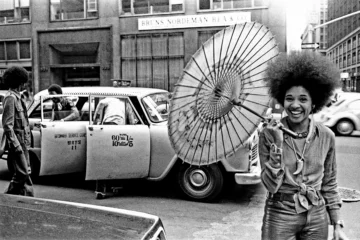Growing up in the segregated South, Eunice Kathleen Waymon dreamed of becoming a classical pianist. At the age of twelve she experienced racism for the first time. At her first recital, her parents were asked to sit in the back row. Eunice bravely stopped playing, stood up and refused to continue until her parents were in the front row.
She took to heart what her piano teacher had taught her: don’t touch the piano until they are ready to listen to you. That moment was the first flowering of the fearlessness and unconventionality that would later characterise her career as an artist. The girl continued undeterred. She trained with discipline, studied at the Juilliard School and applied to the prestigious Curtis Institute. But when her application was rejected – a setback she attributed in part to racial prejudice – her life took a different turn. She was forced to earn her living in nightclubs. There she adopted the name »Nina Simone« to conceal her new life as a jazz singer from her mother.
Simone didn’t perform to get applause; she performed to be heard.
Simone’s frustration with her failed dreams and the racial discrimination she experienced became the gasoline for her performances. She used the stage as a platform to confront the world, especially during the American Civil Rights Movement between the late 1950s and the end of the 1960s. Songs like »Mississippi Goddam« were direct appeals to her audience, urging Simone to confront the anger and pain she felt. Every note was charged with defiance and an unstoppable urge for truth. Simone didn’t perform to get applause; she performed to be heard.
Certainly not Bach, but all the more stirring
But Simone’s intensity on stage wasn’t just about anger. It encompassed a whole range of emotions. Her live performances moved fluidly between joy and sorrow, love and anger, reflecting the complexity of her own life. When she sang »Feeling Good«, she wasn’t just performing a song – she was sharing a rare moment of triumph. And on »I Loves You, Porgy,« you hear both vulnerability and strength – a back and forth that reflects the complexity of her relationships and the challenges of a career in which she was often exploited. On stage (and off) she was a paradox: compulsive but irrepressible; vulnerable but unbreakable.
Simone demanded respect, silence and full attention from the audience, which created a palpable tension in her performances. Sometimes this made her unpredictable – she would stop a song if she felt disrespected, or refuse to continue playing until the room was quiet.
This stemmed from her deep-rooted desire to be taken seriously – a desire that stemmed from her classical training. Despite her success in jazz and blues, she always mourned the classical career that had been denied her. After her Carnegie Hall début performance, she wrote to her parents that although she was playing on that famous stage, she was not playing Bach. This disappointment was also evident in her live performances, where she often held her audience to the high standards she had once set for herself as a classical pianist.
A stage for trauma
One of her most unforgettable recordings, her version of »Go Limp« at Carnegie Hall, shows her forgetting the words in the middle of a song, improvising and getting the audience to sing along. It’s an unguarded moment that shows both her control over her audience and her openness to letting them in for a fleeting moment. These performances were snapshots of her inner world, laid bare for anyone willing to listen.
To see Nina Simone live is to watch a person process the past in performance, seek a new future and trust herself to be totally in the present: playing a set was alien to Simone, her songs often emerged during the performance. In her greatest moments, you could literally see Simone tapping into other spheres, as if the muse herself were on stage. Chaos was possible. Always. But the sense of order in Nina Simone had long been out of whack. In her performances you could feel the truth: something difficult to name between the notes. Something that still makes some people cry today.











